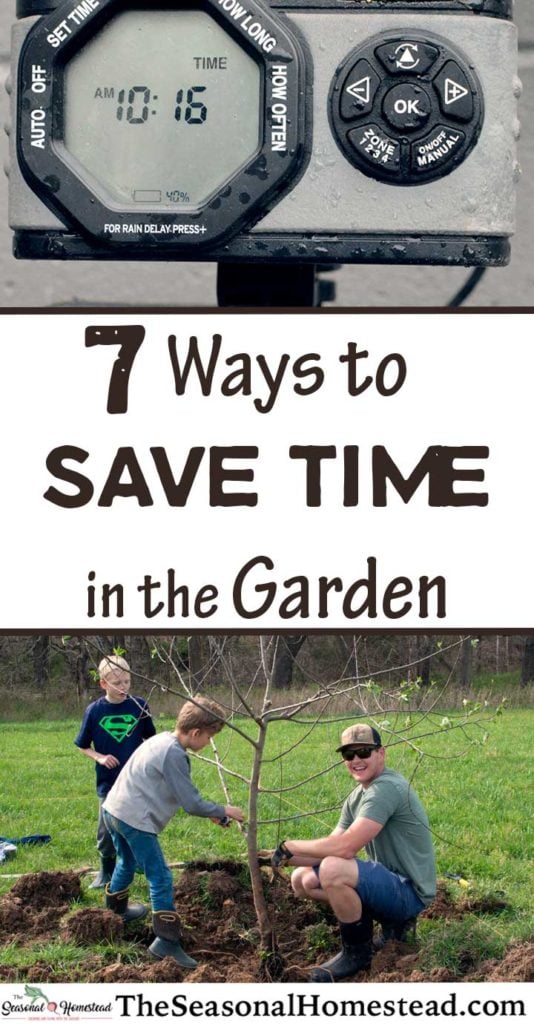Part 1 of the Homesteading Time Management Series
Recently, I’ve had several readers ask me how I am able to do all the gardening and preserving that I do. Especially because I have a family to take care of as well. I was answering people individually but I felt it would be better to do a blog post on the subject so I could dive into detail.

An even more common question is “How do you do it all?” The truth is that I don’t. I just focus my time on things which bring me joy and hold the most value in my life. There will always be things left undone because no one can “do it all”.
Sometimes I get frustrated by that realization but I think it is by divine design. It is good to be industrious and work hard. And if the work was finished then it would promote laziness.
Once we accept that we can’t get everything done everyday, then we can move on and recognize all the things we did do, rather than what we didn’t. Noticing what does get done is a great motivator!
In talking about time-management, I am going to be brake this up into a series of blog posts.
I thought I would first go through how I save time in the garden and in preserving food each year. Cutting out busy work in these areas and unnecessary items is vital to having enough time to accomplish your goals. Then I will explain how I allocate my time and any other tips that will help.
First, let’s talk about how to shave off hours and hours of time in your garden.
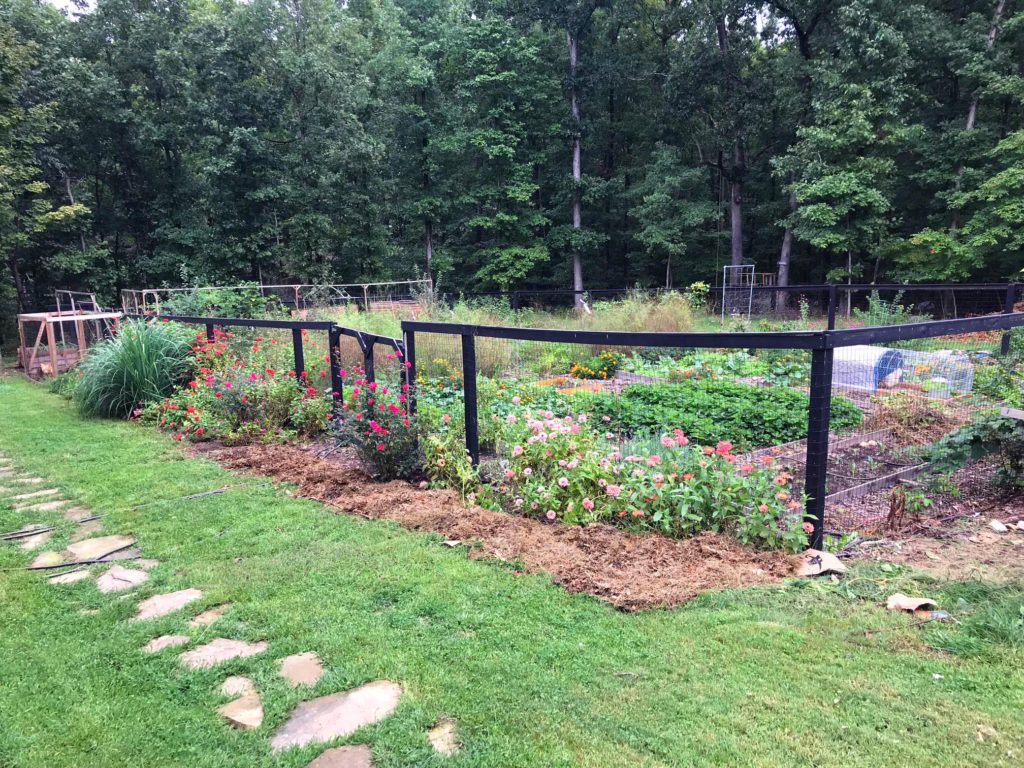
Time-Saving Tips for The Fruit and Vegetable Garden
The garden is the mainstay of a homestead. Time in the garden is time well spent. Yet there are definitely some ways to keep the busy work at a minimum and productivity at a maximum. Here are some things I do in my garden to save time.
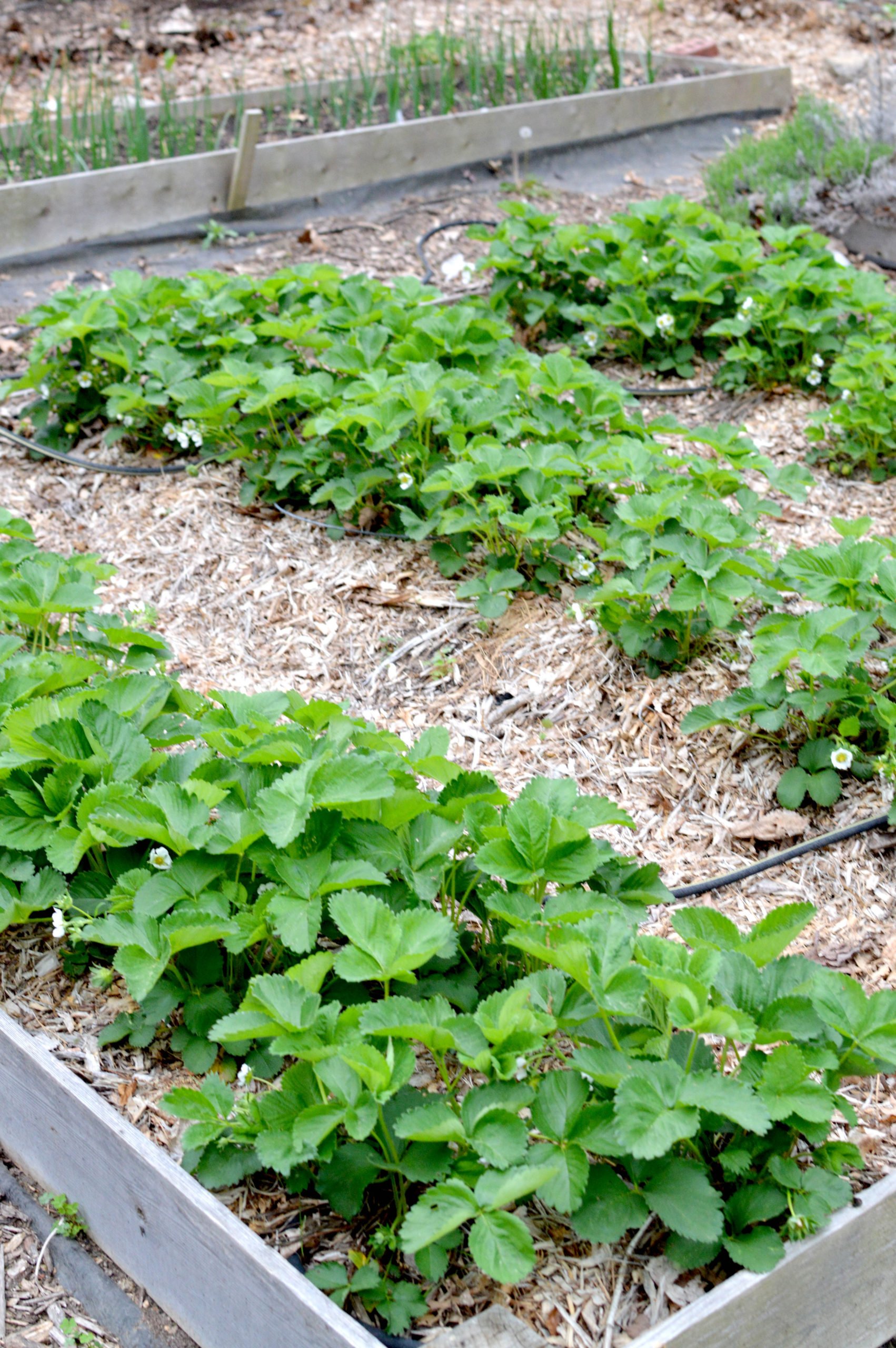
#1 Cover the soil after it’s planted.
This tip is first because it’s definitely the most time saving thing you could do for yourself. Covering the soil with mulch (wood chips, straw, shredded leaves, etc.) feels like a lot of work initially but it will save countless hours of weeding over time.
Also, don’t be skimpy on the mulch. Add only a few inches when the plants are young and leave a little space around where the plant stem comes out of the ground. But once they get big enough, 6 inches of mulch layered in rows and in between plants is great.
#2 Streamline your garden design.
After years of playing around with different garden formats and pretty designs, one thing I wish I had done was to stick to one size garden bed.
I think that is my one regret of my current garden, I wish I would have done raised beds that were all the same size. Then all the bug netting and row covers would be universal for all garden beds instead of making specific sizes. It also takes me a long time to plan where all my plants will go because plant rotation in different sized garden beds is complicated.

#3 If you plant your own indoor seedlings, don’t start too early.
As someone who always does indoor starts for the garden, I’ve learned a lot. A huge time draining activity for me in the spring is moving those seedlings indoors and outdoors everyday to acclimate them to the outdoors.
If you start sowing the plants too early then you are dealing with taking not just a few trays but many, many trays inside and out. This is because as the seedlings get bigger you are potting them up to larger size pots. Larger pots and plants mean more trays to haul indoors and out each day.
It may not seem like a big deal but that time really does add up eventually. I realize in northern climates, the early start times may be more necessary and critical to harvest.
If that is the case for you, then you may not be able to adjust the early start time as much. A possible alternative would be growing some quicker maturing plant varieties. You can find my post about fast maturing plants for cold climates HERE.
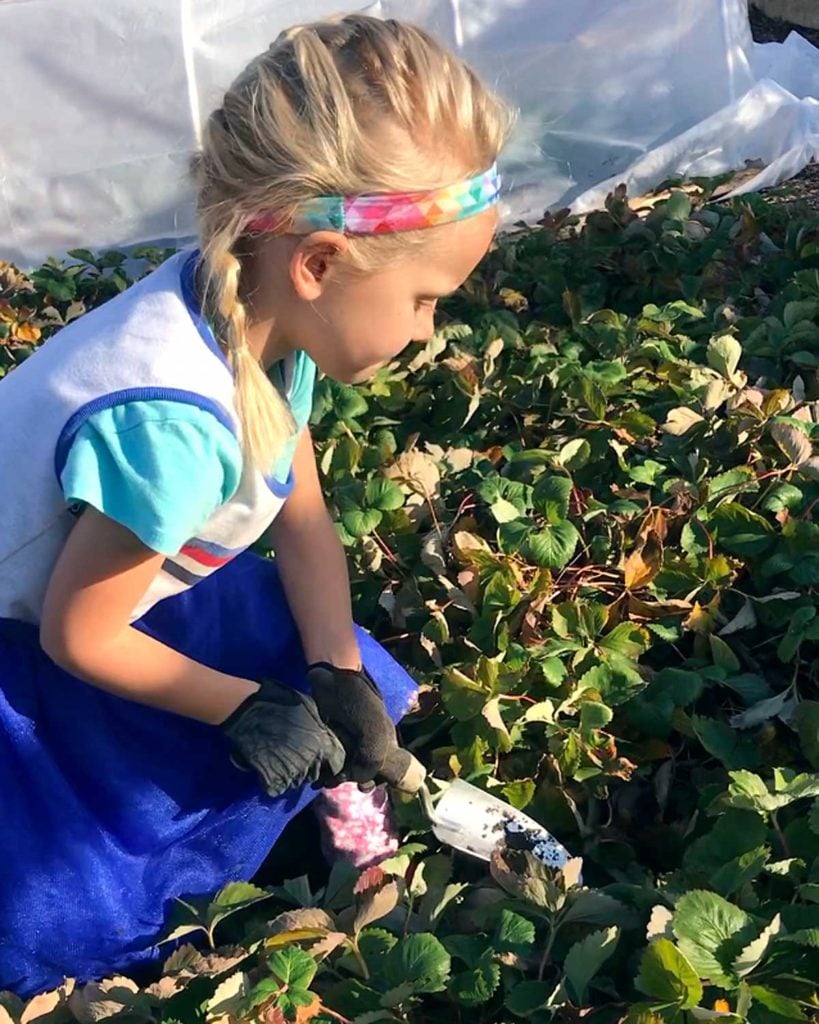
#4 Get your family involved.
In my house, if you want to eat food from the garden at harvest time, you need to work for it beforehand. I personally think it is a good way for my kids to learn that you reap what you sow. The food doesn’t magically appear on your plate. It comes from a seed which was planted, tended, bore fruit, and then was picked and prepared.
Doing some of the work in the garden helps all of us to appreciate what it took to grow that food. I still do the majority of the work since it is a task that brings me a lot of joy. But I have the kids and Cameron help wherever possible.
The kids have caught on to my enthusiasm for gardening and often will come and help of their own free choice. They have always come with me to help in the garden even since they were very young. Initially, teaching them how to help in the garden slowed me down but once they picked up the skills it really saved time since the entire family contributes now.
In the height of the summer harvest season, when garden tasks like harvesting and weeding can become overwhelming, I delegate assignments to each person in the family to ensure we are keeping up with what needs to be done.
I need to do this because it is usually more work than my children would come and do of their own volition. Unless of course it’s berry picking which they would happily stay around to eat and pick almost all day long. 🙂
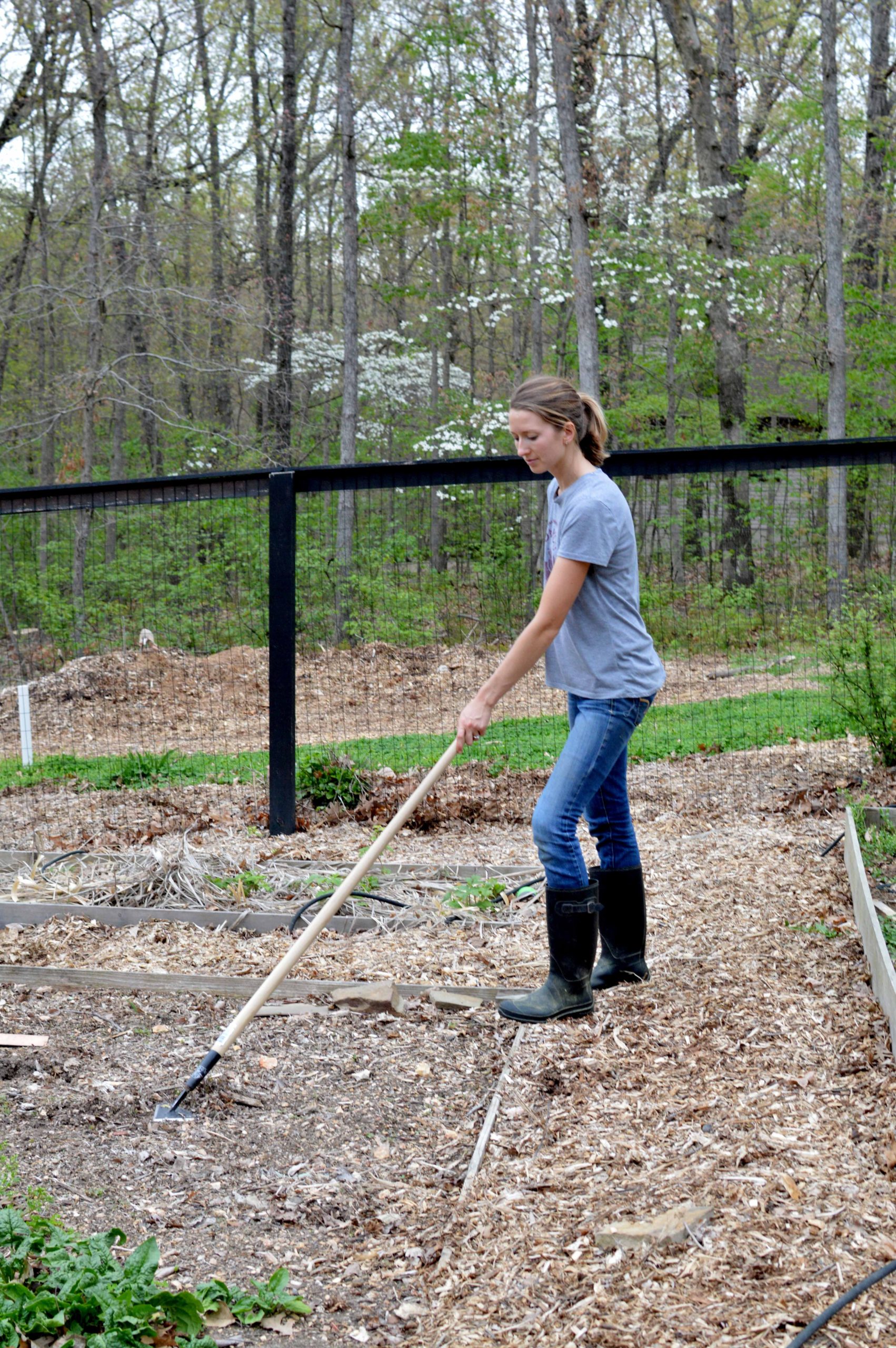
#5 Get the Right Tools for the Job.
I can’t live without my scuffle hoe (found HERE) for use in between garden beds or prior to planting. It saves so much time and unnecessary effort. I still use a traditional hoe inside garden beds that are already planted so I don’t accidentally chop the plants I want to keep.
I also recommend getting the right tools because for some reason it took me way to long to learn that. Here’s a few examples:
I used to just use a small pruner for all my chopping and pruning jobs. I would find myself hacking my way through thicker branches and blackberry canes. I finally got a large pruning tool and it was a world of difference. I could have saved myself hours and hours of time.
The same thing played out a long time ago when Cameron and I first moved to Arkansas. We were both used to having the soft and beautiful topsoil of much of the northern US. When it came time to dig a hole at our new home we took out our shovel and started to dig.
We got a big surprise when we realized we could barely make it past the first few inches. We struggled with any digging project we had. Years later we purchased a pick axe and wondered what in the world we were thinking trying to shovel in our rock/clay soil.
So long story short, having the right tool will really save you a lot of time. More often than not, it’s worth the expense!
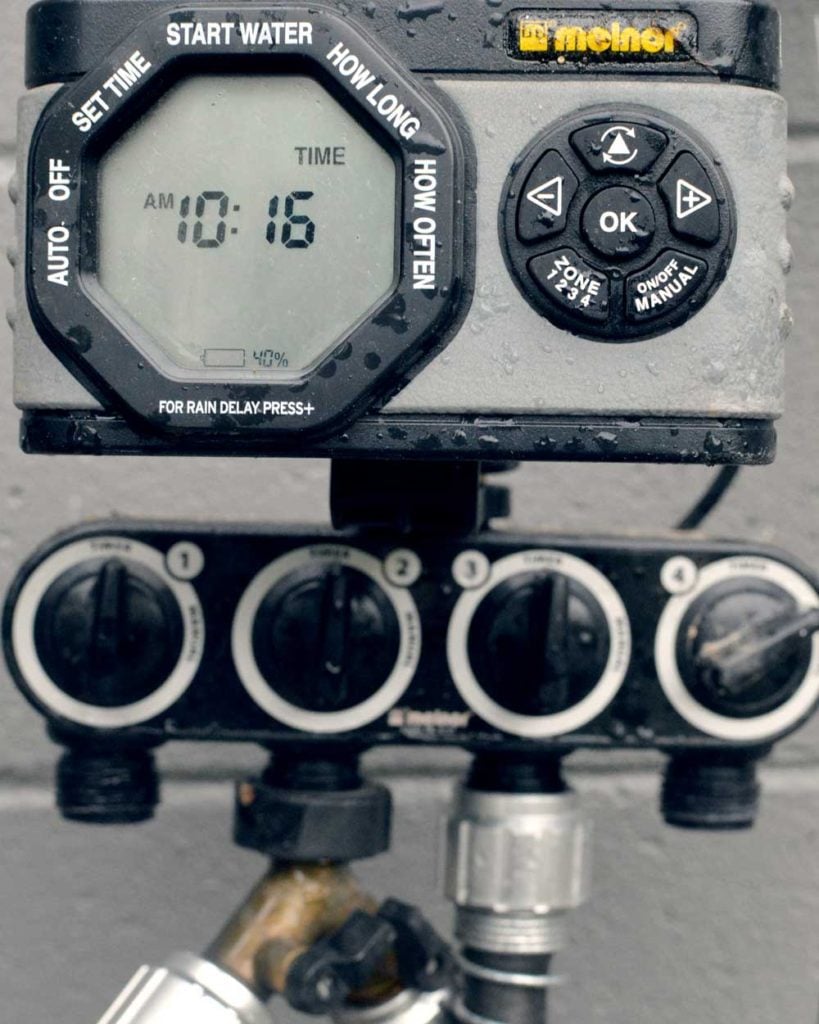
#6 Automate your watering
Hand watering in the garden every other day can easily take anywhere from twenty minutes for small gardens to two hours for large gardens.
Before we had our watering timer and hoses set up I was in the group of watering by hand almost two hours a day a few times a week. It took way too much time. While I heartily embrace some old fashioned things, hand watering the garden is not one of them.
A timer on the spigot makes watering easy and fast. I wish I had a good one to recommend but I’m convinced there is no watering timer that is worth recommending (at least at the time of writing this). Even though I replace mine often it’s worth the cost.
#7 Be vigilant about removing weeds when they are young.
In the time between planting seeds and covering the soil with mulch weeds will come around. Weeds aren’t difficult to manage when they are young. A swift hoeing will kill the majority in no time.
It’s imperative that you get them while they are in the baby phase because the roots are shallow and they can be removed with a tool. Once they get big enough (and trust me can double their size overnight) you will need to start pulling by hand which really adds a ton of time.
See you next week for Part 2: Ways to Save Time Preserving!
